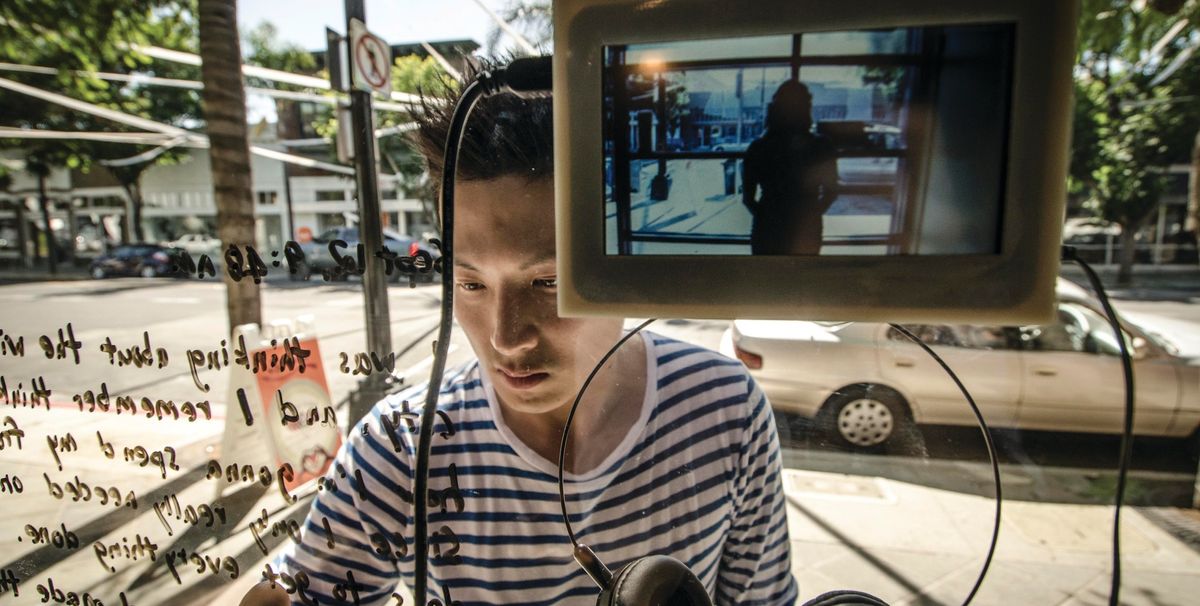To have a conversation with Samson Young is to zip through the myriad topics that draw his curiosity, from literature to current affairs and history. His work asks specific questions about Hong Kong, where he was born in 1979, but also addresses universal themes, such as conflict and identity. Although sounds and music are often a starting point, he has made videos, installations, collages and drawings. He has, for instance, recorded sounds in the geographical area separating China and Hong Kong, arranging them into sonic compositions and then transcribing them as graphic notations. He has recreated explosions in Middle Eastern war zones using household objects, and has projected birdsong through sound cannons (ultrasonic weapons). On the rise since he won Art Basel’s first BMW Art Journey award in 2015, Young will represent Hong Kong at this year’s Venice Biennale. His sound piece for Documenta 14, opening in Athens in April and Kassel, Germany, in June, draws on the BMW project.
The Art Newspaper: A lot of research has gone into your work for the Venice Biennale. What was your process?
Samson Young: My research is not very structured. Usually it begins with a hunch, a kind of light bulb moment that I do not yet fully understand. I had the hunch that at this moment in time, charity singles—like USA for Africa’s We Are the World and Band Aid’s Do They Know It’s Christmas?—are something interesting to think about. Then I make a kind of mental mind-map: to the 1980s, and the rise of the global pop music industry, and how that coincided with the rise of neoliberalism, and the consolidation of power by people like Ronald Reagan and Margaret Thatcher. I began to read up on these things, jumping from node to node. By the time I sit down to turn a specific element of my research into a work, I’ve probably already travelled to a far and remote corner in this mind-map. People sometimes think there is a sense of overload of information in my works, nodes that are seemingly ambiguous and unrelated, but I assure you they are all connected in my mind.
How does that hunch become a work?
For Venice, the exhibition is titled Songs for Disaster Relief. It looks at the peak of the musical genre of charity singles. Not to make a mockery of them, but rather looking at what sort of cultural and historical circumstances made these songs possible. By the end of the 1980s, the beginning of the 1990s, charity singles were no longer such a big thing in the US or the UK. Recently there have been remakes of both We Are the World and Do They Know It’s Christmas? But to me, they sound strangely out of time. I am not talking about a kind of political incorrectness—there is that, too—but I think my discomfort has more to do with the genuine aspirations that these songs embodied on the one hand and the moral and ethical problems they present on the other. Charity singles took root in Hong Kong in a big way—their popularity lasted well into the new millennium. I think that here, we are even less critical of these gestures; we tend to think of them as we do of any other imported popular music genres.
What was your personal experience of charity singles?
In the 1980s, Hong Kong singers did a lot of covers of popular songs from the UK, the US and sometimes Japan—it was almost all you could hear on the radio and on TV. And because they were sung in Cantonese, these songs were not perceived as “foreign”. So we had cover versions of popular charity singles. But we also made our own. Charity fundraising TV programmes were a huge thing, and there’s always a song; most often a hit song reappropriated with new lyrics. Whenever something bad happens—for instance, the Eastern China flood or Sars—the default response for cultural workers is still to make a supergroup of artists, charity single-type song.
How have these songs been used in Hong Kong?
There is one specific charity single-like song that really stuck with me. The now-defunct Urban Council made a number entitled Gather All Our Lights in 1990, featuring supergroup artists doing staggering solos. This song wasn’t produced to respond to a specific disaster, but with the specific purpose of cheering people up in the aftermath of [the Tiananmen Square massacre], when many Hong Kongers had lost confidence in the city’s future. It was basically government propaganda. But if you do a close reading of its lyrics, it uses all the same aspirational imaginaries as a charity single: the helping hand, the feet moving forward, the head held high. I am intrigued by this song.
Why?
A certain emotional response was elicited, and they are certainly real emotions. But you cannot help but feel a bit manipulated. How does one reconcile this? If you think about a song like Do They Know It’s Christmas?—yes, these singers were trying to do some good, and sure, the lyrics [which critics have argued take a colonial, stereotypical view of Africa and a condescending tone] are super-problematic and we need to call that out. Now what? How has society changed from that moment?
Will there be new music in Venice?
There will be a new sound installation. There is a super-messed-up version of Do They Know It’s Christmas? and a slightly messed-up version of We Are the World. I’m taking these iconic songs and modifying them heavily.
What are you doing for Documenta 14?
It’s an hour-long composition made from bells related to conflict, from around the world. I made these recordings last year [for the BMW Art Journey]. I had always meant to make a composition from them, but have not had the time to do so. The Documenta commission is very specific: they want a sound piece, and a long one. This might be the longest thing that I’ve ever written.


